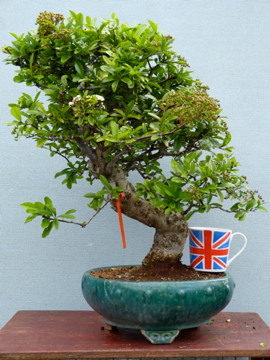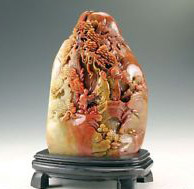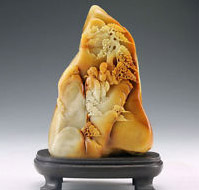Sep 22, 2014 | General
This year again we will be supporting the Bonsai Group Enfield’s autumn show.
We had a great time at this show last year and I would highly recommend going if you can.
We are happy to take along any prepaid orders for collection, saving the shipping cost. If you need us to bring anything please get in touch in plenty of time.
G.
Autumn_show_flyer_2014 final
Sep 16, 2014 | General
Who wouldn’t love to break through a copper? Especially those who hide in bushes with speed cameras 😉
Anarchic proclivities aside I have good news for those of you who love using copper wire. For a long time now it has only been possible to find good quality annealed copper in Japan. All things considered that is a very expensive route to go. We have been looking into an alternative source for a couple of years now and finally found one. Nice soft clean copper wire in large diameter coils and the best bit? £6.88 lower price!
This great new product should be live on the site in a few days time.
[Update] Copper Wire For Bonsai & Craft Work now available.
We’re working our asses off to bring you the best offers out there!
G.
P.S New video is in the can 😉

Sep 8, 2014 | General
I am constantly being asked for new videos. We have been far too busy for months now to do much more than keep on top of the watering. However a quiet few days have enabled us to start on a new feature. Just to whet your appetite here is a pic’ of the tree we are working on. Hopefully we can have this ready for you to see in the next couple of weeks 😉
G.

Aug 14, 2014 | General
I was bought up to be a grafter. I started work at age 13 and have been at it ever since. I left school a dumbass with no more than the highest grade in the history of the school for woodwork. In every other respect I was an academic failure because I just couldn’t see the point. Maybe as a result I didn’t get along as quickly as I could have. Maybe my life has been a lot more hard work than it could have been but then I have pretty much attained all the goals i set out to achieve. I have learned that hard work and a willingness to do what others will not can work wonders. Taking calculated risks is an integral part of success too. Over 10 years ago I walked out of a 22 year career in an industry that I hated and stepped out into thin air. Having had no other choice it worked out Ok.
Having spent 22 years in bonsai I do have itchy feet again but do not fear I’m not off anywhere just yet. My journey in this fascinating hobby has been much the same as the rest of my life, a lot of hard work, some success and some failure and a lot of risk taking. Judging by the avalanche of correspondence I receive almost continually most folk want someone like me to help make their bonsai career simple, fail safe and risk free. Many people seem to EXPECT that from me too and get very nasty when I don’t become their guardian angel. Somehow a lot of people have gotten the idea that life is all about being happy and it’s somebody else that is responsible if that’s not the case. If I posted some of the crap I have had from folk on here it would make you cry, it certainly bought a tear to my eyes.
Somebody once said ‘the man who never made a mistake never made anything’. I remember Peter Adams said the only reason people went to his workshops was because he had killed more trees than anyone alive. After all these years I now understand what he was saying. The experience and knowledge gained from failure provides a depth of knowledge and understanding few can match. However I see a lot of people who fail and learn absolutely nothing. Failure is a great opportunity to learn and the bigger the failure the more possibility there is for learning. Tony Beets said “Lessons cost money, good ones cost lots”. The thing I just do not understand is why folk give up because they fail, that is entirely beyond my comprehension. The only reason to give up is because we are dead and, to date, I have never heard of anyone dying trying to achieve bonsai success.
Over the years I have suffered failure all the way from a mild annoyance to total catastrophe. I lost my first bonsai to a series of ham-fisted events and at the time that was very expensive. Since then failure has followed me around like a little dog. Every once in a while it nips at my heels but seeing as it hasn’t ripped my face off or chewed my head from my body I carry on. That’s what men do (or should), take responsibility, suck it up, learn a lesson and carry on. If you want to be successful at bonsai don’t try and blame someone else for failure. Don’t go looking for a ‘no win no fee’ parasite of a lawyer. Take the lesson and keep going, never stop and then when you do die get your ashes sprinkled on your trees. Maybe that way you can be of benefit 🙂
I said all that to say this……..
Pyracantha (firethorn) is a funny plant and one that folk seem to love or hate. My own opinion is any tree that makes a fine root system, buds from old wood easily, has small leaves, flowers and produces copious quantities of fruit and can be obtained cheaply is worth a look. Over the last few years we have had a steady supply of this species and at very good prices for the quality. The big problem we have experienced is re-potting. Completing the work in spring as growth commences has proven very unreliable. Some trees have been VERY slow to recover, some have lost significant areas and others have died all together. Autumn re-potting has also seen patchy results. For the life of me I could not figure out what was going on. This was happening with everything from young small trees to very old bonsai and was getting expensive.
As the old proverb says. ‘When the pupil is ready the teacher appears’. And so it went. I get a lot of plants from a couple of local landscapers and i recently got a call from one of them about a hedge coming out… pyracantha. My immediate reaction was to turn it down, I have never lifted one of these things and had it survive. I figured that over the height of summer there was no way. However you never know what these guys will turn up and they duly arrived with a truck loaded with some very solid looking pyracantha and a bunch of privets too. I paid the guys and and we dumped the trees into buckets with garden compost and took all the remaining trash to the tip. I figured I had just wasted most of my money and two days wages. D’oh.
A week later I noticed not a single leaf had wilted, even in the very hot conditions we were experiencing. A month later and all the stumps are pushing strong buds from old wood. Now anyone who knows me or has done any work here will know that over the past 5 years we have been moving more and more re-potting into the summer. It started with olives way back and now includes about 40% of what we grow. Full on re-potting from June to end of August. The success has been absolutely spectacular. I should point out we do not re-pot ANY deciduous trees during this period. However any evergreen, semi-evergreen or conifer we have worked has shown SPECTACULAR results if treated correctly.
Earlier in the year a very good friend asked me when we should re-pot his pyracantha and I had to say I really didn’t know because of the mixed results I had been having. A month ago he came to a workshop and offered up the tree as a guinea pig. I offered a caution but it was brushed aside. We duly completed the re-pot and as of last weekend the tree was doing extremely well. No leaf loss, new buds opening out and flowers forming too. My motley collection of stumps are also doing very well.
And THAT”S how we learn to do bonsai 😉
G.


Aug 5, 2014 | General
After a short break I am pleased to say lime sulphur, now Jin Whitener is back in stock. This elusive product is getting harder to come by and the price has gone up a bit but it’s something we all need. Just in case you missed it I have an article on the subject of Preserving Deadwood
Of late we have been turning up all sorts of nice and unusual little bits and pieces from netsuke to suiseki and bronzes. Our latest arrival is a small number of Chinese traditional Shoushan carved stones. This amazing art form can trace its history back nearly 1500 years. Keep an eye on the web site as we have a LOT of new products coming as well as a huge number of trees and raw material.
G.




Jul 25, 2014 | General
Another daft ramble but do bear with me 😉
In 25 years of being involved in bonsai I do not remember a season with more P&D (pest & disease) problems. This seems very wide-spread in the U.K judging by the number of enquiries we have had of late. All things being equal this can really only be blamed on the weather but then I am a Brit’ and here the weather is to blame for most anything and everything.
The trouble with P&D today is that a simple Google search will, supposedly, give the answer to most anything. Judging by what we see from the correspondence we receive, most folk go right to the worst possible cause, often for the most insignificant of issues. As an example I lost my wife to cancer, the final stages started with a simple headache. Most times you get a headache it’s unlikely to be cancer. However where bonsai is concerned as soon as folk see a few yellow leaves they start calling around the undertakers. GPs (doctors) have advised strongly against self diagnosis via the internet. I am sure this is for the same reason, without a base level of knowledge it’s very easy to arrive at the wrong diagnosis.
Speaking personally I had no interest in plants before I arrived on the doorstep of bonsai. My background and experience was in motor vehicles and machinery. I started following the usual paths of books and bonsai clubs (no internet back then). After a few years I was so confused I wanted to give up. Much later I went to college and studied horticulture. We looked at everything from turf maintenance, soil science, bedding plant production and plant genetics to…… P&D. After that everything fell into place for me and I stopped having to try to second guess what was happening all the time. I certainly appears to me that most folk come to bonsai with a similar experience and so figuring out what’s happening when something goes wrong is tough.
Diagnosing a pest problem is fairly easy, if you have stuff crawling around on your trees it’s a simple job to find out what they are and most creepy crawlies are easily despatched. When you have a problem without legs it’s a little more difficult. The big problem with plants is that no matter what goes wrong the only thing they can do is go a funny colour, usually yellow, followed by brown or black. Yellowing foliage can be anything from a natural June or autumn drop to the effects of drying out, nutrient deficiencies, environmental issues or fungal problems. In fact ANYTHING that goes wrong with a plant will result in yellowing foliage. Part of the problem is that before a tree sheds its leaves it will withdraw nutrients from the leaf turning it yellow and so yellowing leaves is a perfectly normal situation for most plants and it’s also the primary indicator of developing problems. Sorting out what’s what is a skilled task indeed.
For the past 10 years or more I have had a nursery containing between 2>3000 trees. This is a massive burden and not half the fun it might appear to be. Taking care of that lot is a living and expensive nightmare. However it does give me a great insight into the intricacies of bonsai tree care and development as well as the problems we all face. Over the years it has become plain that plants are tough organisms that are massively adaptable. However in bonsai we do push our luck. When I was at college they told us one of the more difficult aspects of horticulture was growing plants in pots. In bonsai we take very old plants and try to grow them in very small pots. Then we expect to do that for decades. A recipe for disaster if ever there was one. For the newbie it’s a tortuous maze and the odds are stacked massively against any hope of success.
There are just too many factors in bonsai to be able to ever give a definitive answer to most care issues. Think about it, trees growing in nature in ideal conditions have unlimited scope to grow roots, gather moisture and harvest sunlight. We take all that away by reducing the root mass and soil volume and constantly pruning. With the best care in the world a tree growing in a pot is under constant stress, couple that to the fact we like to move our trees around and ship them from all parts of the world, growing them in alien environments. Then if we do suffer from a lack of horticultural skill and understanding along with a poor grasp of the application of bonsai technique the chances of our doing well is virtually zero. The only recourse is to be persistent, keep learning and expect some failures along the way.
So, having said all that here are a few pointers that have helped me over the years.
Right plant right place.
Keeping a tree in the wrong place is like trying to keep a fish out of water. Learn what the plant needs in terms of its natural habitat and native situation. The closer we can get to that ideal the better, the fact the tree is growing in a pot has no bearing on this.
Learn to read your trees.
I think anyone who knows me knows my opinion on forums, books and the like. Bonsai are grown and thrive outside. Get out there and learn to read your trees, they are the best indicator of what’s happening. Experience a plants environment, smell the air feel the soil touch the plant. Watch what happens when things change, look at the colour, observe the plants use of water. Never look at a plant from your point of view. Our plants are communicating everything we need to know but they don’t send emails.
Keep bonsai on the trees terms.
If we do not give a tree what it needs we will fail. We MUST keep a tree on its terms. We constantly struggle with beginners insisting on keeping hardy trees indoors and other similar issues. We HAVE to bend ourselves to what our plants need if we are to be successful.
Be VERY patient and take your time.
For the last 20 years I have seen trees pushed too hard. We are all guilty of it, pushing too hard in order to progress a tree and conform it to our will. This ends in failure every time. If we can learn to read our trees it becomes very obvious when it’s ready to take the next step. Producing bonsai from raw material can take 10+ years and maturing a bonsai to be worthy of the name will take a life time. Respect this fact and measure your expectancies accordingly.
Happy bonsai are healthy bonsai..
Good horticultural technique and husbandry is 98% of being successful with bonsai trees. Study horticulture and the understanding that brings will take all the guess-work out of your pass time. A happy bonsai is also free of P&D because it’s defence systems will be very strong. SURE problems do arise but keeping a happy bonsai will ensure the tree has the very best chance of remaining in good health. A happy bonsai is a healthy bonsai and a healthy bonsai makes for a happy owner and that makes the world a better place.
G.










